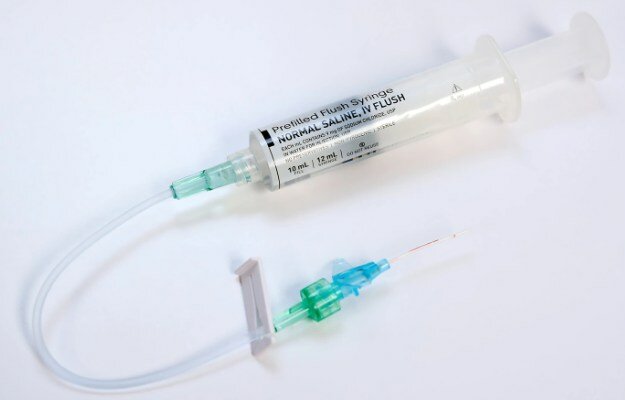Head Position Immaterial During Mild Stroke Recovery
|
By HospiMedica International staff writers Posted on 08 Mar 2017 |
A new study concludes that it does not matter whether patients lie flat on their back or sit up while recovering from a stroke.
Led by The George Institute for Global Health, the Head Position in Acute Stroke Trial (HeadPoST) is an international, multicenter, prospective, crossover trial undertaken in the United Kingdom, South America, Australia, China, Europe, and Mongolia, which recruits 70 consecutive stroke patients per intervention phase. The primary aim of HeadPoST is to compare the effects of lying flat (0°) or sitting up (≥30°) applied in the first 24 hours of admission for patients presenting with acute stroke on the poor outcomes of death or disability at 90 days.
Overall, the researcher assessed just over 11,000 patients (mean age 68, 40% female) from 114 hospitals in 19 countries, with large populations from the UK and China. The results showed no major benefit for sitting up or lying flat in patients with an acute ischemic stroke or intracerebral hemorrhage. A major limitation of the study was that the median U.S. National Institutes of Health (NIH) stroke score of the HeadPoST patients was 4 (on a scale of 0 to 42), while a score of 21 or higher is considered a severe stroke. The study was presented at the International Stroke Conference, held during February 2017 in Houston (TX, USA).
“The important message is that head position doesn’t seem to matter. It has no effect on recovery, the patient’s sense of well-being, or mortality,” said lead author and study presenter Professor Craig S. Anderson, MD, PhD. “We couldn't find any clear signal of benefits or harms in any of the subgroups that we have examined. So we can't make any clear recommendations for policy about whether there could be benefits or harms of a specific head position in acute stroke.”
“It's quite conceivable people with larger vessel strokes presumably might benefit more from the head position being flat,” said session moderator Bruce Ovbiagele, MD, of Medical University of South Carolina (Charleston, USA). “There could be a difference there. The type of population they had in this study is reflective of the kind of patients we see for most part, but when you think about the potential underlying pathophysiology, those large-vessel [patients] might benefit from lying flat.”
American Stroke Association guidelines for management of patients with acute ischemic stroke suggest that non-hypoxic patients who are able to tolerate it should lie in the supine position, while patients at risk for airway obstruction or aspiration, or with suspected elevated intracranial pressure, should have the bed tilted up to 30°. While lying flat can increase blood flow, which is important following ischemic stroke, it could lead to complications such as aspirating stomach contents or saliva, contributing to pneumonia risk.
Led by The George Institute for Global Health, the Head Position in Acute Stroke Trial (HeadPoST) is an international, multicenter, prospective, crossover trial undertaken in the United Kingdom, South America, Australia, China, Europe, and Mongolia, which recruits 70 consecutive stroke patients per intervention phase. The primary aim of HeadPoST is to compare the effects of lying flat (0°) or sitting up (≥30°) applied in the first 24 hours of admission for patients presenting with acute stroke on the poor outcomes of death or disability at 90 days.
Overall, the researcher assessed just over 11,000 patients (mean age 68, 40% female) from 114 hospitals in 19 countries, with large populations from the UK and China. The results showed no major benefit for sitting up or lying flat in patients with an acute ischemic stroke or intracerebral hemorrhage. A major limitation of the study was that the median U.S. National Institutes of Health (NIH) stroke score of the HeadPoST patients was 4 (on a scale of 0 to 42), while a score of 21 or higher is considered a severe stroke. The study was presented at the International Stroke Conference, held during February 2017 in Houston (TX, USA).
“The important message is that head position doesn’t seem to matter. It has no effect on recovery, the patient’s sense of well-being, or mortality,” said lead author and study presenter Professor Craig S. Anderson, MD, PhD. “We couldn't find any clear signal of benefits or harms in any of the subgroups that we have examined. So we can't make any clear recommendations for policy about whether there could be benefits or harms of a specific head position in acute stroke.”
“It's quite conceivable people with larger vessel strokes presumably might benefit more from the head position being flat,” said session moderator Bruce Ovbiagele, MD, of Medical University of South Carolina (Charleston, USA). “There could be a difference there. The type of population they had in this study is reflective of the kind of patients we see for most part, but when you think about the potential underlying pathophysiology, those large-vessel [patients] might benefit from lying flat.”
American Stroke Association guidelines for management of patients with acute ischemic stroke suggest that non-hypoxic patients who are able to tolerate it should lie in the supine position, while patients at risk for airway obstruction or aspiration, or with suspected elevated intracranial pressure, should have the bed tilted up to 30°. While lying flat can increase blood flow, which is important following ischemic stroke, it could lead to complications such as aspirating stomach contents or saliva, contributing to pneumonia risk.
Latest Critical Care News
- 'Universal' Kidney to Match Any Blood Type
- Light-Based Technology to Measure Brain Blood Flow Could Diagnose Stroke and TBI
- AI Heart Attack Risk Assessment Tool Outperforms Existing Methods
- Smartphone Imaging System Enables Early Oral Cancer Detection
- Swallowable Pill-Sized Bioprinter Treats GI Tract Injuries

- Personalized Brain “Pacemakers” Could Help Patients with Hard-To-Treat Epilepsy
- Microscopic DNA Flower Robots to Enable Precision Medicine Delivery
- Origami Robots to Deliver Medicine Less Invasively and More Effectively
- Improved Cough-Detection Technology Aids Health Monitoring
- AI Identifies Children in ER Likely to Develop Sepsis Within 48 Hours
- New Radiofrequency Therapy Slows Glioblastoma Growth
- Battery-Free Wireless Multi-Sensing Platform Revolutionizes Pressure Injury Detection
- Multimodal AI to Revolutionize Cardiovascular Disease Diagnosis and Treatment
- AI System Reveals Hidden Diagnostic Patterns in Electronic Health Records
- Highly Sensitive On-Skin Sensing Monitor Detects Vitamin B6 and Glucose in Sweat
- Artificial Intelligence Revolutionizing Pediatric Anesthesia Management
Channels
Surgical Techniques
view channel
Minimally Invasive Endoscopic Surgery Improves Severe Stroke Outcomes
Intracerebral hemorrhage, a type of stroke caused by bleeding deep within the brain, remains one of the most challenging neurological emergencies to treat. Accounting for about 15% of all strokes, it carries... Read more
Novel Glue Prevents Complications After Breast Cancer Surgery
Seroma and prolonged lymphorrhea are among the most common complications following axillary lymphadenectomy in breast cancer patients. These postoperative issues can delay recovery and postpone the start... Read morePatient Care
view channel
Revolutionary Automatic IV-Line Flushing Device to Enhance Infusion Care
More than 80% of in-hospital patients receive intravenous (IV) therapy. Every dose of IV medicine delivered in a small volume (<250 mL) infusion bag should be followed by subsequent flushing to ensure... Read more
VR Training Tool Combats Contamination of Portable Medical Equipment
Healthcare-associated infections (HAIs) impact one in every 31 patients, cause nearly 100,000 deaths each year, and cost USD 28.4 billion in direct medical expenses. Notably, up to 75% of these infections... Read more
Portable Biosensor Platform to Reduce Hospital-Acquired Infections
Approximately 4 million patients in the European Union acquire healthcare-associated infections (HAIs) or nosocomial infections each year, with around 37,000 deaths directly resulting from these infections,... Read moreFirst-Of-Its-Kind Portable Germicidal Light Technology Disinfects High-Touch Clinical Surfaces in Seconds
Reducing healthcare-acquired infections (HAIs) remains a pressing issue within global healthcare systems. In the United States alone, 1.7 million patients contract HAIs annually, leading to approximately... Read moreHealth IT
view channel
Printable Molecule-Selective Nanoparticles Enable Mass Production of Wearable Biosensors
The future of medicine is likely to focus on the personalization of healthcare—understanding exactly what an individual requires and delivering the appropriate combination of nutrients, metabolites, and... Read moreBusiness
view channel
Philips and Masimo Partner to Advance Patient Monitoring Measurement Technologies
Royal Philips (Amsterdam, Netherlands) and Masimo (Irvine, California, USA) have renewed their multi-year strategic collaboration, combining Philips’ expertise in patient monitoring with Masimo’s noninvasive... Read more
B. Braun Acquires Digital Microsurgery Company True Digital Surgery
The high-end microsurgery market in neurosurgery, spine, and ENT is undergoing a significant transformation. Traditional analog microscopes are giving way to digital exoscopes, which provide improved visualization,... Read more
CMEF 2025 to Promote Holistic and High-Quality Development of Medical and Health Industry
The 92nd China International Medical Equipment Fair (CMEF 2025) Autumn Exhibition is scheduled to be held from September 26 to 29 at the China Import and Export Fair Complex (Canton Fair Complex) in Guangzhou.... Read more














